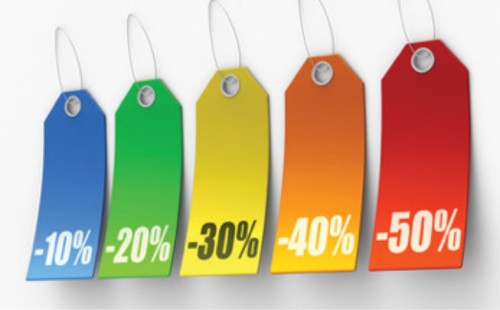
POTOO’s E-Commerce Price Defense Solutions
In today’s digital marketplace, Amazon and Walmart have revolutionized shopping. While these marketplaces and other known platforms offer brand growth opportunities, they also can bring…
Blogs | June 12, 2019
You may find yourself using the term ‘online marketplace’, but do you really know what it is? Read on to find out.
Ah, the online marketplace… it’s like shopping online, right? Well, not exactly.
When you go into an actual brick and mortar store or shop on their website, you’re buying a product manufactured and sold by that brand.
An online marketplace is different. It’s like going to a farmers market, where different vendors might be selling one or many products, from any number of brands. Now picture that online; that’s an online marketplace.
EXAMPLES OF MARKETPLACES
There are many examples of online marketplaces. The top 3 in the United States are Amazon, eBay, and Walmart.
Amazon is the largest, with more than $160 billion in 3rd party sales and $117 billion for 1st party sales last year. For consumers shopping online, 9 out of 10 will check Amazon’s pricing before purchasing an item. To gauge popularity, 43% of teens say that Amazon is their favorite shopping site.
Walmart and eBay rank a distant 2nd and 3rd in size. Contrary to popular belief, and perhaps stemming from their roots as a place to get gently used goods, now 80% of the items you can buy on eBay are new products, and 70% of those items ship for free. And although Walmart is the world’s largest company by revenue, it has a much smaller marketplace than Amazon or eBay.
SIZE MATTERS
There are a few components that determine marketplace scale: Amount of Revenue, Number of Sellers, and Quantity of Listings.
The amount of revenue is an easy one – how much money a brand or product brings in.
The number of sellers refers to how many 3rd party sellers (vendors who may be authorized or unauthorized by a brand to sell a specific product online) are carrying a product and competing with each other for sales. Lastly, the quantity of listings refers to how many unique items are being sold.
So, what makes the Amazon marketplace different from its smaller competitors eBay and Walmart? Well, for starters, it’s huge. Amazon’s marketplace is even larger than their direct sales.

Unlike Walmart and eBay, in addition to selling its own brands, like Kindle and Echo, Amazon allows 3rd party vendors to sell other brands besides its own. It then competes with other marketplaces to get the lowest price. So, not only does Amazon price match externally to eBay, Walmart, Best Buy, Target, and many other online marketplaces (finding out selling price on those platforms and then under-cutting them), it also matches the 3rd party sellers on Amazon, essentially pitting them against each other for the lowest price. Unimpeded, this drives the price of manufacturers’ products lower and lower, which can be good for consumers, but isn’t necessarily good for the consistency of a brand’s image.
By having their own brands, Amazon is not only competing on manufacturers’ listings, they may also be competing for market-share and product visibility. For example, if Amazon is selling their Basics brand batteries for lower than Duracell, they will bump up their own listings, and advertise them heavily. In this scenario, it’s more difficult for brands to introduce a new product at a price that can compete.
On the consumer side, getting an item for the lowest possible price may seem like a great idea, but it doesn’t take into account that the majority of 3rd party sellers are legitimate, bad actors that can take advantage of Amazon’s liberal seller enlisting process by introducing unauthorized foreign goods, expired and stolen items, and counterfeits. All of these can compromise consumer trust, brand consistency, and a brand’s bottom line.
COMPETITION MATTERS
Competitiveness takes on slightly different forms depending on the platform, but the nuances matter greatly, and the actions of one marketplace have the potential to affect others.
Amazon, unlike eBay, is both a retailer and a marketplace and their direct retail competes against their 3P competition by matching price. Walmart has a smaller marketplace and does not match price there.
eBay is 100% a marketplace (they don’t manufacture discrete eBay products) and since it doesn’t sell items that it manufactures, it doesn’t compete against its 25m sellers. The way eBay catalogs and displays items is different from the other two marketplaces as well. Amazon and Walmart display sellers of an item on the item page. So, 50 people selling the same item on eBay will have 50 item pages, but on Amazon and Walmart, all 50 of those items will appear on the same page.
Online marketplaces are not all the same. They have different dynamics and different scale, and each requires a different set of tools to properly address.
Co-Founder & Chief Executive Officer, POTOO

In today’s digital marketplace, Amazon and Walmart have revolutionized shopping. While these marketplaces and other known platforms offer brand growth opportunities, they also can bring…

The world of online shopping is changing fast, and digital marketplaces are gaining more influence. Walmart’s online marketplace is growing rapidly, which is a big…

Making informed decisions is the cornerstone of success. The rapid evolution of technology and the influx of data have created both opportunities and challenges for…